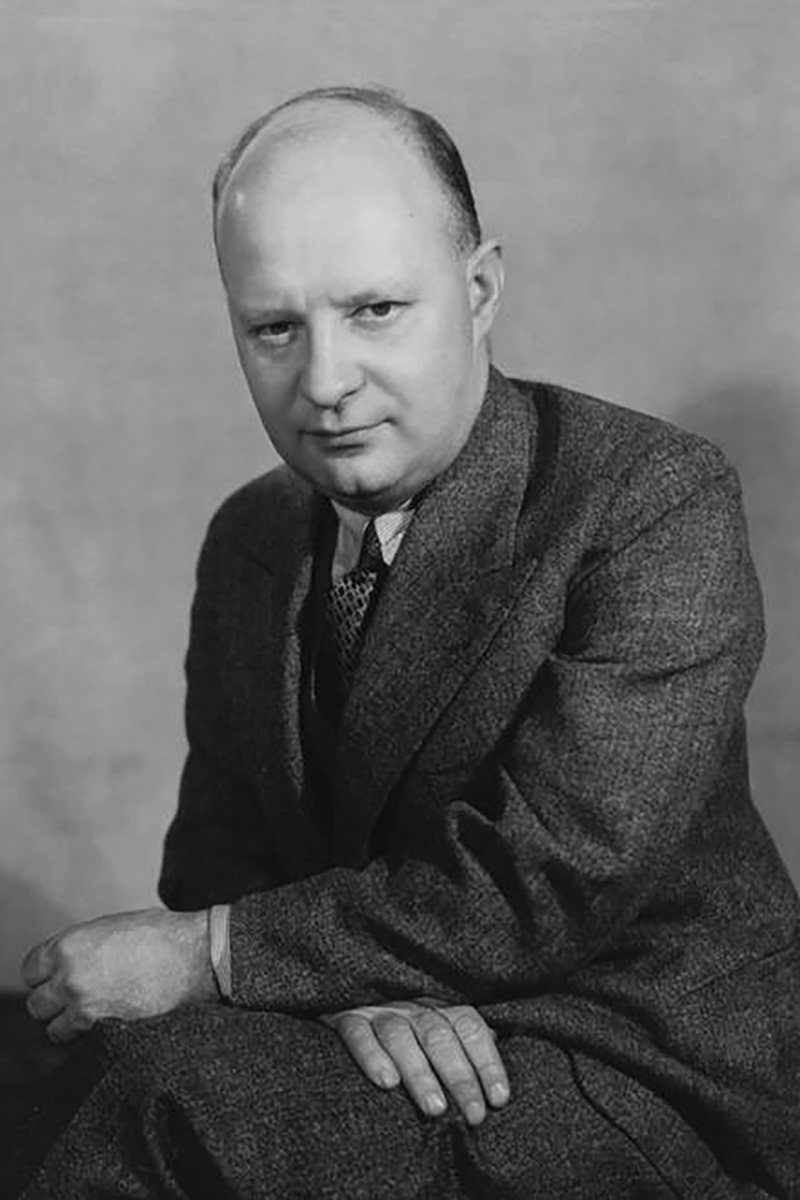Paul Hindemith

Born: November 16, 1895, Hanau, near Frankfurt
Died: December 28, 1963, Frankfurt, Germany
Oktett
- Composed: 1957-1958
- Premiere: September 23, 1958 in Berlin
Late in 1957, Paul Hindemith visited England from his home in Blonay, Switzerland to take part in the centennial celebrations of the Hallé Orchestra in Manchester. “The concerts were very pleasant,” he wrote to his American lawyer, Oscar Cox, “but with snowstorms, dirt and general English winter conditions we got all H.R.M.’s Mid England coal dust, bleakness and grippe bacilli into our lungs, brains and stomachs, so that on the way back we came down with a pretty nice sickness.” Hindemith recovered sufficiently from his Midlands malady to oversee a Kassel (Germany) production of Cardillac in January. The following month, in Blonay, he completed the five-movement Oktett for Winds and Strings and sent the score to his publisher, Willy Strecker at Schott, on February 24th. “A useful piece,” read the note included with the shipment, “though on account of its nature and form no world-shattering event.” The work was premiered at the Berlin Festival on September 23, 1958; members of the Berlin Philharmonic were joined by the composer, a string player of vast experience and high accomplishment, performing one of the viola parts.
Like so many of his instrumental pieces, the Oktett, Hindemith’s last chamber work, borrows and transforms the musical forms and styles of earlier eras. The instrumentation was based on that of Schubert’s Octet, though the second violin is here replaced by a second viola, quite possibly so that the composer could more easily include himself in performances of the work. (Hindemith, ever the practical musician, admitted that one of his motivations in writing the piece was so that “the many more-than-quartet chamber music ensembles might put [it] in their programs.”) The chief stylistic influences on the Oktett were the richly textured Bachian counterpoint that Hindemith had rejuvenated in his distinctly modern idiom and the multi-movement Classical divertimento. The first movement, with its snapping-rhythm slow introduction and fugal main section, may also be intended to recall the old French overture form of Lully.
The opening movement begins with an astringent preludial paragraph whose stern countenance decoys the healthy bustle of the music that follows. The principal part of the movement is in an arch form using four thematic units. The first is a jaunty angular motto, stated in unison, followed quickly by a more lyrical strain given by the violin. Next comes a tiny dotted-rhythm motive (derived from the violin’s theme) which leads to a long-limbed melody in mixed meters initiated by the clarinet. Following a momentary silence, the center of the movement is given over to an extended fugue arising from the low strings. The earlier thematic material is then recapitulated in reverse order: the clarinet theme, here entrusted to the violas, is the subject of a polyphonic discussion; the dotted-rhythm motive is briefly bandied about; the violin’s lyrical tune reappears in the clarinet and bassoon; and the angular phrase is recalled by the winds above rustling accompanimental figures in the strings.
The second movement is a set of variations on a theme of unpredictable meter first presented by the violin. The melody, decorated with ingenious figurations and counter-melodies, remains intact as the variations progress, appearing successively in clarinet, viola/bass, horn, pizzicato strings, cello/bass and winds. The slow movement, the expressive and formal center of the Oktett, is in a simple ternary form. The outer sections are based on a long horn melody sung above a solemn string accompaniment, while the middle portion is a fugue based on a rhythmic figuration borrowed from the strings’ accompaniment figure. (Hindemith may well have been the 20th century’s greatest contrapuntist.) The return of the opening theme, now in the clarinet, rounds out the form of the movement. As was characteristic of the Classical symphony, the closing movements of this Oktett contain the work’s lightest spirits: a witty scherzo grown from a distinctive knocking motive, and a Fugue and Three Old-Fashioned Dances (Waltz, Polka, Galop), which are all based on the strongly profiled melody given in unison at the beginning.
© Dr. Richard E. Rodda